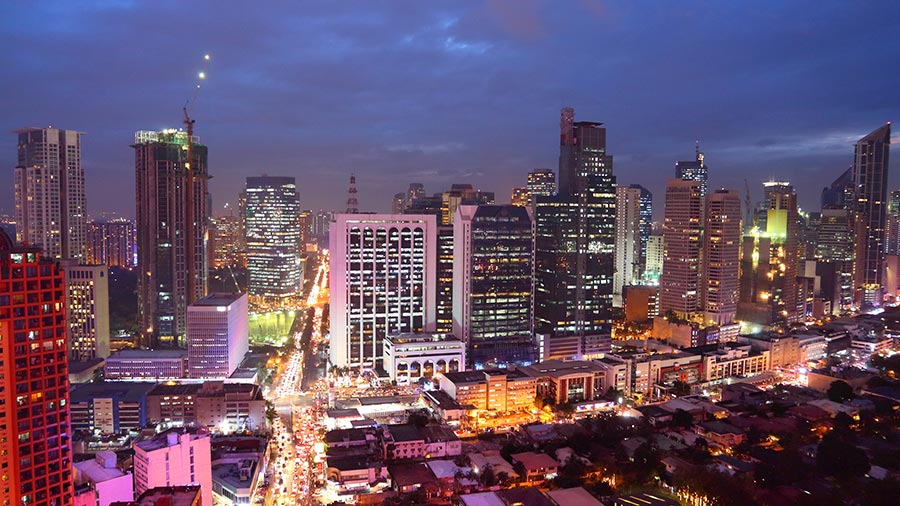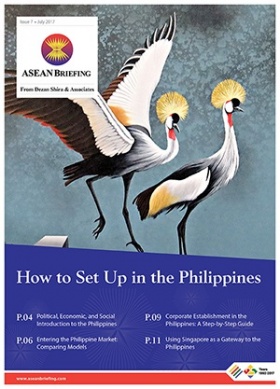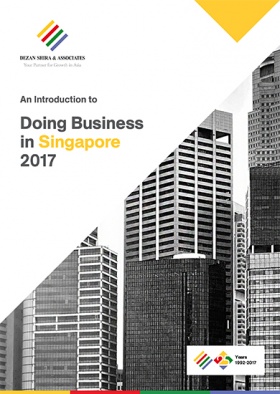The Philippines’ Investment Outlook for 2019
Despite the downside risk of recent inflation in the Philippines, the International Monetary Fund (IMF) projects a 6.6 percent economic growth outlook by 2019. On the other hand, the inflation forecast is estimated to reduce by 4 percent amid a 6.7 percent current inflation rate. The IMF cites a weaker peso, higher excise taxes and rising global oil prices as key inflation drivers.
The World Bank’s Economic Update on the Philippines presents a positive growth direction in terms of sustainability and inclusiveness, notwithstanding the Philippine government’s efforts to tackle domestic risks through careful fiscal management and timely implementation of tax reforms and public investment programs such as the “Build, Build, Build” scheme of the administration of President Rodrigo Duterte. Infrastructure spending is rising year-on-year with 44 out of 75 projects already implemented. Known for his strong political will and decisive leadership, Duterte wants urgent implementation of these projects especially in areas with potential for investing in business.
Investment Climate
At the end of 2017, the Philippines registered the highest rate of foreign direct investment (FDI) progress in ASEAN.
FDI continued to grow by 42 percent in the first half of 2018 due to increasing investor confidence driven by the country’s sound macroeconomic fundamentals and growth prospects. The Philippine Statistics Authority (PSA) noted a total of approved foreign investments in the second quarter of the same year which amounted to PHP 30.9 billion (US$575.9 million), much higher than the PHP 18.2 billion (US$339.2 million) recorded in 2017.FDI inflows continue to surge in the Philippines despite the global FDI decrease which reflects a favorable investment climate. Foreign business leaders also welcome the government’s initiative to encourage corporate establishments in the country.
On October 29, 2018, Duterte signed the Executive Order No. 65 promulgating the 11th Regular Foreign Investment Negative List (FINL). The said order was amended to include five areas for 100 percent foreign investment participation.
The National Economic and Development Authority (NEDA) listed the following investment areas/activities where 100 percent FDI will now be permitted:
- Internet businesses, as excluded from mass media;
- Teaching at higher education levels provided the subject being taught is not a professional subject (i.e., included in a government board or bar examination);
- Training centers that are engaged in short-term high-level skills development that do not form part of the formal education system;
- Adjustment companies, lending companies, financing companies and investment houses; and
- Wellness centers excluded in Item 4 of List B of the FINL.
Opening up to foreign investors and limiting constraints in doing business has become a priority of the Duterte government. Duterte frequently underpinned the importance of amending the 1987 constitution to lift foreign investment restriction in order to cut red tape and further liberalize business practices.
The shift to Federalism also offers a significant outlook for the country’s competitiveness in generating more employment opportunities.
Economy
Information Technology – Internet Service
The Philippines has recently addressed a major industrial policy concern by bringing in a third TELCO player in order to end a duopolistic situation in its telecommunication industry, and allow new players to enter.
The National Telecommunications Commission confirmed Mislatel as the third major telecom player. The consortium is made up of China Telecom, a Chinese state-owned telecommunication company and Udenna Corp and Chelsea Logistics owned by Davao-based tycoon Dennis Uy.
A third internet provider has long been sought for in the country due to its worsening internet reputation in Asia. Under Duterte, the Philippines has raised the bar for foreign participation. Duterte’s stance is that foreign investment in this area is needed in order to improve the country’s telecom and power sectors, and in turn, boost the economy. With the constitutional amendment on its way, more foreign investors can compete for the service.
While Industry topped the major economic growth sector last year, the Services sector indicated the fastest growth this year at 6.9 percent followed by Industry sector with a growth of 6.2 percent. The country’s current GDP growth stands at 6.1 percent as of November 2018.
Banking & Credit
Based on Moody’s investor service report on the Philippines banking system, the Philippines maintains a Baa2 rating credit outlook with very positive features. Moody predicts that a stable credit growth will continue for the next 12-18 months, noting that cost-effectiveness is improving.
On the other hand, the back-to-back hikes in interest rates are seen in a positive light amid the inflationary pressures and impact of tax reforms (TRAIN Law). The Banko Sentral ng Pilipinas (BSP), the country’s central bank, extended the borrowing rate by 150 basis points to cope up with the inflation and this is expected to elevate until next year.
Meanwhile, the Philippines also noted a substantial decline in the country’s external debt in recent years.
As of June 2018, foreign debt went down by 1.4 percent from the previous year, amounting to US$997 million. BSP attributed this to the de-leveraging of private sector foreign borrowings that minimizes foreign exchange (FX) risk.
Outlook for 2019
Declining poverty and an estimated labor rate of 94.6 percent contribute to the Philippines’ sustainable growth trajectory.
The rising population which is estimated to reach 106.6 million makes the country attractive for foreign investment due to its young, well-educated and dynamic workers.The completion of infrastructure development that hinges on public expenditures would strengthen business and consumer spending. However, external factors would continue to pose uncertain risks in the global financial markets.
The World Bank 2018 report projects that average inflation would fall at 3 percent by 2019 – within the BSP ‘s 2-4 percent target range. It also expects the Service sector to become the main driver of economic growth.
About Us
ASEAN Briefing is produced by Dezan Shira & Associates. The firm assists foreign investors throughout Asia and maintains offices throughout ASEAN, including in Singapore, Hanoi, Ho Chi Minh City and Jakarta. Please contact us at asia@dezshira.com or visit our website at www.dezshira.com.
- Previous Article 新加坡的企业税
- Next Article 新加坡与中国香港营商对比








